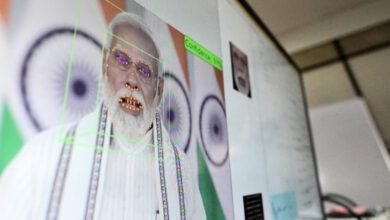Revolutionary Qubit technology paves the way for a practical quantum computer


Researchers are advancing quantum computing by developing qubits based on the spin of electrons and holes, with recent discoveries at the University of Basel showing controlled interactions between qubits using hole spins. These advances suggest a promising future for efficient, scalable quantum computers that use existing silicon technology.
Advances in qubit technology at the University of Basel show promise for scalability
” data-gt-translate-attributes=”[{“attribute”:”data-cmtooltip”, “format”:”html”}]” tabindex=”0″ role=”link”>quantum computingusing electron and hole spins to achieve precise qubit control and interactions.
The search for a practical quantum computer is in full swing, with researchers around the world exploring a wide range of qubit technologies. Despite extensive efforts, there is still no consensus on which type of qubit best maximizes the potential of quantum information science.
Qubits are the basis of a quantum computer. They are responsible for processing, transferring and storing data. Effective qubits must store information reliably and process information quickly. This requires stable and fast interactions between large numbers of qubits that external systems can precisely control.
Today’s most advanced quantum computers have just a few hundred qubits. This limits them to performing calculations that conventional computers are already capable of performing and which they can often do more efficiently. For quantum computing to advance, researchers must find a way to accommodate millions of qubits on a single chip.
Electrons and Holes
To solve the problem of organizing and linking thousands of qubits, researchers at the University of Basel and NCCR SPIN rely on a type of qubit that uses the spin (intrinsic angular momentum) of an electron or a hole. A hole is essentially a missing electron in a semiconductor. Both holes and electrons have spin, which can adopt one of two states: up or down, analogous to 0 and 1 in classical bits. Compared to electron spin, hole spin has the advantage that it can be fully controlled electrically without the need for additional components such as micromagnets on the chip.

Two hole spin qubits interacting. When a hole (magenta/yellow) passes from one location to another, its spin (arrow) rotates due to so-called spin-orbit coupling, leading to anisotropic interactions represented by the surrounding bubbles. Credit: NCCR SPIN
In 2022, physicists at Basel demonstrated that holes rotated in an existing electronic device can be captured and used as qubits. These “FinFETs” (fin field effect transistors) are integrated into modern smartphones and are produced in widespread industrial processes. Now, a team led by Dr. Andreas Kuhlmann has managed for the first time to achieve a controllable interaction between two qubits within this configuration.
Fast and accurate controlled Spin-Flip
A quantum computer needs “quantum gates” to perform calculations. These represent operations that manipulate qubits and couple them together. As the researchers report in the magazine computer paves practical Quantum Qubit revolutionary technology




